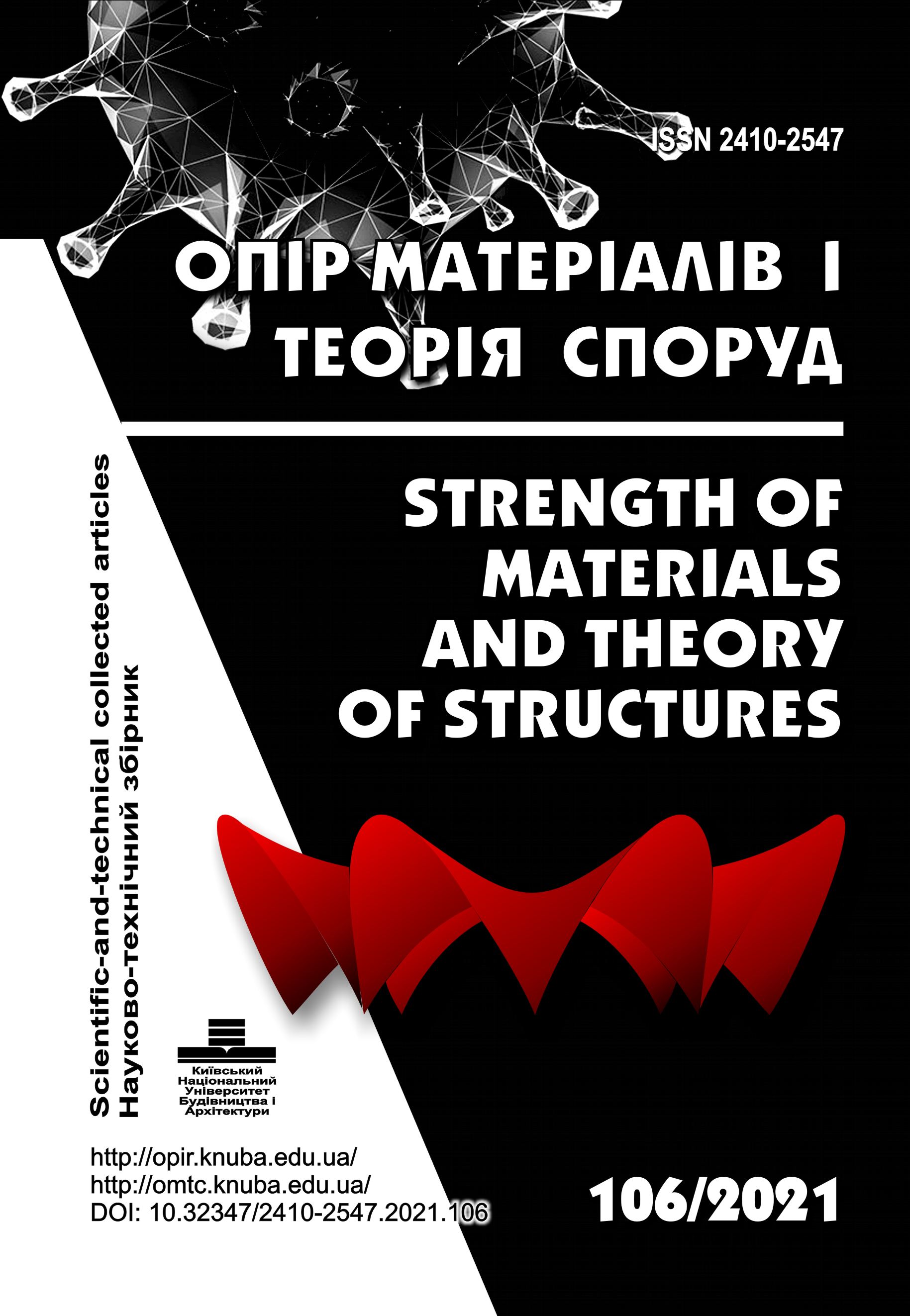Justification of the requirements for the construction of protective structures by means underground workings in an explosive manner
DOI:
https://doi.org/10.32347/2410-2547.2021.106.129-140Keywords:
construction, civilian population, earthworks, blasting, dynamic loading, shock wave, soil, camouflet, deep charge, calculation methods, safety, optimizationAbstract
In the opposition of the people of Ukraine to the aggressive policy of the Russian Federation, the question of studying the experience of combat operations in the east of our state is relevant. Analysis of the losses suffered by the Armed Forces of Ukraine and the civilian population during the operation. The Joint Forces (anti-terrorist operation) in Donetsk and Luhansk region clearly point to the need to study the issue of creating safe shelters, especially for the civilian population with limited time and resources. This can be realized provided that explosive methods of underground construction are used alongside traditional earthworks.
The construction of such structures must be strong and have a sufficient internal volume and ensure the safety of the people there and allow the placement of various household and sanitary equipment.
Based on the above, it should be noted that the article considers the topical issue of arrangement of underground structures and shelters in one of the ways, namely explosive. The essence of the explosive method of arranging underground workings is that a well is arranged in the soil, in which the appropriate charge of the explosive is installed and detonation is carried out. Due to the explosion of the charge, a camouflet cavity is formed, which is used for the construction of an underground protective structure or its elements.
The use of this method can significantly reduce and sometimes completely eliminate time-consuming and unproductive work on the development and removal of soil from the slaughter. Accordingly, the conditions of camouflage of buildings are significantly improved and the terms of their construction are reduced.
The purpose of the article is to highlight the methodological approach to substantiate the requirements for the main indicators of construction of protective structures by arranging underground workings in an explosive manner.
The considered methodical approach can be used both at planning of actions for the fortification equipment of shelters for the civilian population and during carrying out scientific researches for the purpose of substantiation of requirements to the basic indicators of construction of protective constructions by arrangement of underground workings by explosive way. As a direction of further research in the subject area is the improvement of scientific and methodological approach to the calculation of a multilayer underground protective structure.
References
Metodychni rekomendatsii z inzhenernoho obladnannia raioniv oborony (opornykh punktiv ta pozytsii), bazovykh taboriv, blokpostiv (Methodical recommendations on engineering equipment of defense areas (bases and positions), base camps, checkpoints). – Kyiv, 2018. – S. 221. (in Ukrainian)
Nabiullin M. I. Matematicheskaya model' rascheta amplitudy izbytochnogo davleniya na fronte vozdushnoy udarnoy volny (Mathematical model for calculating the amplitude of excess pressure at the front of an air shock wave) / M. I. Nabiullin, A. V. Guseva, D. YU. Verin, S. A. Vilokhin // Vestnik tekhnologicheskogo universiteta. 2017. T.20, №3 – S. 141-144. (in Russian)
Tuzikov S.A. Analiz vymoh do zakhysnykh sporud tsyvilnoho zakhystu i metodolohichni pidkhody do yikh klasyfikatsiyi (Analysis of requirements for protective structures of civil defense and methodological approaches to their classification) / S.A. Tuzikov, S.O. Kovzhoha, YE.V. Karmannyy, A.F. Lazutskyy, A.V. Pysaryev // Zbirnyk naukovykh prats KHUPS. – 2013. – №1(34). – S. 186-189. (in Ukrainian)
Vasylchenko O.V. Budivelni konstruktsiyi ta yikh povedinka v umovakh nadzvychaynykh sytuatsiy: Navchalnyy posibnyk (Building structures and their behavior in emergency situations: a textbook) / O.V. Vasylchenko, YU.V. Kvitkovskyy, O.V. Myrhorod, O.A. Stelmakh. – Kharkiv: KHNADU, 2015. – 488s. (in Ukrainian)
Kobylkin I.F. Udarnyye i detonatsionnyye volny: Metody issledovaniya (Shock and Detonation Waves: Research Methods) / [I.F. Kobylkin, V.V. Selivanov, V.S. Solov'yev, N.N. Sysoyev].–M.: Fizmatlit, 2004. – 375s. (in Russian).
Ananich S.A. Fortifikacziya: uchebnik (Fortification: textbook)/ S.A. Ananich, P.K. Buznik, A.I. Sukharev. – Moskva, 1964. – 446 s.
E`pov B.A. Osnovy` vzry`vnogo dela (Blasting Basics). – Moskva: Voenizdat, 1974. – 222 s.
Downloads
Published
Issue
Section
License

This work is licensed under a Creative Commons Attribution 4.0 International License.
Authors retain copyright and grant the journal right of first publication with the work simultaneously licensed under a Creative Commons Attribution License that allows others to share the work with an acknowledgement of the work's authorship and initial publication in this journal.

